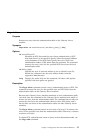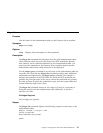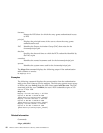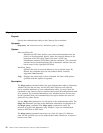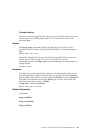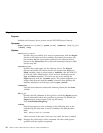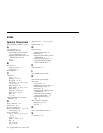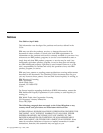
dfsgw query
Purpose
Queries the authentication table on the Gateway Server machine
Synopsis
dfsgw query -id networkID:userID [-af address_family][-help]
Options
-id networkID:userID
Identifies an NFS client and the user whose authentication from the
client is to be determined. Specify either the network address or the
hostname of the NFS client. Specify the user’s UNIX user
identification number (UID) rather than the username. The command
searches the local authentication table to determine whether the user
has an entry for the specified NFS client.
-af address_family
Specifies the style of network address to use to identify hosts. By
default, the command uses the only address family currently
supported, inet (Internet).
-help Displays the online help for this command. All other valid options
specified with this option are ignored.
Description
The dfsgw query command checks the local authentication table to determine
whether the user has an entry for the NFS client. Because each Gateway
Server machine maintains its own authentication table, you must issue the
command on the Gateway Server machine that houses the authentication table
to be queried. The command determines only whether the user has an entry
for the specified client; the command does not report whether the user has
entries for any other clients.
Use the dfsgw list command to see all entries in the authentication table. The
dfsgw list command provides some additional information not displayed by
the dfsgw query command. The dfsgw query command is useful for
inclusion in scripts that determine only whether a user has authenticated
access to DFS from an NFS client.
The dfsgw query command returns an exit value of 0 (zero) if it finds an
entry for the specified user in the authentication table. Otherwise, it returns a
nonzero exit value.
42 DFS for Solaris: NFS/DFS Secure Gateway Guide and Reference




